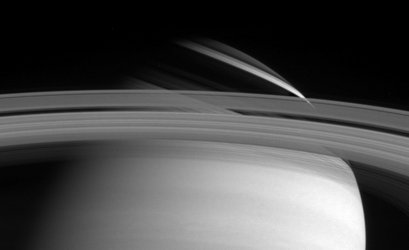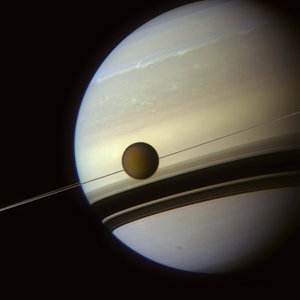Accept all cookies Accept only essential cookies See our Cookie Notice

About ESA
The European Space Agency (ESA) is Europe’s gateway to space. Its mission is to shape the development of Europe’s space capability and ensure that investment in space continues to deliver benefits to the citizens of Europe and the world.
Highlights
ESA - United space in Europe
This is ESA ESA facts Member States & Cooperating States Funding Director General Top management For Member State Delegations European vision European Space Policy ESA & EU Space Councils Responsibility & Sustainability Annual Report Calendar of meetings Corporate newsEstablishments & sites
ESA Headquarters ESA ESTEC ESA ESOC ESA ESRIN ESA EAC ESA ESAC Europe's Spaceport ESA ESEC ESA ECSAT Brussels Office Washington OfficeWorking with ESA
Business with ESA ESA Commercialisation Gateway Law at ESA Careers Cyber resilience at ESA IT at ESA Newsroom Partnerships Merchandising Licence Education Open Space Innovation Platform Integrity and Reporting Administrative Tribunal Health and SafetyMore about ESA
History ESA Historical Archives Exhibitions Publications Art & Culture ESA Merchandise Kids Diversity ESA Brand CentreLatest
Space in Member States
Find out more about space activities in our 23 Member States, and understand how ESA works together with their national agencies, institutions and organisations.
Science & Exploration
Exploring our Solar System and unlocking the secrets of the Universe
Go to topicAstronauts
Missions
Juice Euclid Webb Solar Orbiter BepiColombo Gaia ExoMars Cheops Exoplanet missions More missionsActivities
International Space Station Orion service module Gateway Concordia Caves & Pangaea BenefitsLatest
Space Safety
Protecting life and infrastructure on Earth and in orbit
Go to topicAsteroids
Asteroids and Planetary Defence Asteroid danger explained Flyeye telescope: asteroid detection Hera mission: asteroid deflection Near-Earth Object Coordination CentreSpace junk
About space debris Space debris by the numbers Space Environment Report In space refuelling, refurbishing and removingSafety from space
Clean Space ecodesign Zero Debris Technologies Space for Earth Supporting Sustainable DevelopmentLatest
Applications
Using space to benefit citizens and meet future challenges on Earth
Go to topicObserving the Earth
Observing the Earth Future EO Copernicus Meteorology Space for our climate Satellite missionsCommercialisation
ESA Commercialisation Gateway Open Space Innovation Platform Business Incubation ESA Space SolutionsLatest
Enabling & Support
Making space accessible and developing the technologies for the future
Go to topicBuilding missions
Space Engineering and Technology Test centre Laboratories Concurrent Design Facility Preparing for the future Shaping the Future Discovery and Preparation Advanced Concepts TeamSpace transportation
Space Transportation Ariane Vega Space Rider Future space transportation Boost! Europe's Spaceport Launches from Europe's Spaceport from 2012Latest

Saturn’s shadows
Thank you for liking
You have already liked this page, you can only like it once!
It may seem odd to think of planets casting shadows out in the inky blackness of space, but it is a common phenomenon. Earth’s shadow obscures the Moon during a lunar eclipse, and Jupiter’s moons cast small shadows onto their parent planet.
One of the best places in our Solar System to spot intriguing and beautiful celestial shadows is at Saturn. On 1 July, the international Cassini mission celebrates 10 years of exploring Saturn, its rings and its moons, an endeavour that has produced invaluable science but also stunning images like this.
Drifting along in the foreground, small and serene, is Saturn’s icy moon Mimas. The blue backdrop may at first appear to be the gas giant’s famous and impressive set of rings, with pale and dark regions separated by long inky black slashes, but it is actually the northern hemisphere of Saturn itself. The dark lines slicing across the frame are shadows cast by the rings onto the planet.
Although we may not associate the colour blue with Saturn, when Cassini arrived at the planet the northernmost regions displayed the delicate blue palette shown in this image. As this region of Saturn is generally quite free of cloud, scattering by molecules in the atmosphere causes sunlight to take a longer path through the atmosphere. The light is scattered predominantly at shorter – bluer – wavelengths. This is similar to why the sky on Earth appears blue to our eyes.
Seasonal changes over the years since this photo was taken have turned the blue into Saturn's more familiar golden hue. The reverse is occurring in the south, which is slowly becoming bluer.
This image is composed of infrared, optical and ultraviolet observations from Cassini’s narrow-angle camera on 18 January 2005. The colours closely match what the scene would look like in true colour.
The Cassini–Huygens mission is a cooperative project of NASA, ESA and Italy’s ASI space agency.
This image was first published on the NASA Cassini website, in 2005.
-
CREDIT
NASA/JPL/Space Science Institute -
LICENCE
ESA Standard Licence

Shadow cast by Saturn's rings

Shadows of Saturn's rings on the planet's cloud tops

In the shadows of Saturn’s rings

Saturn’s inside-out rings















 Germany
Germany
 Austria
Austria
 Belgium
Belgium
 Denmark
Denmark
 Spain
Spain
 Estonia
Estonia
 Finland
Finland
 France
France
 Greece
Greece
 Hungary
Hungary
 Ireland
Ireland
 Italy
Italy
 Luxembourg
Luxembourg
 Norway
Norway
 The Netherlands
The Netherlands
 Poland
Poland
 Portugal
Portugal
 Czechia
Czechia
 Romania
Romania
 United Kingdom
United Kingdom
 Slovenia
Slovenia
 Sweden
Sweden
 Switzerland
Switzerland






















